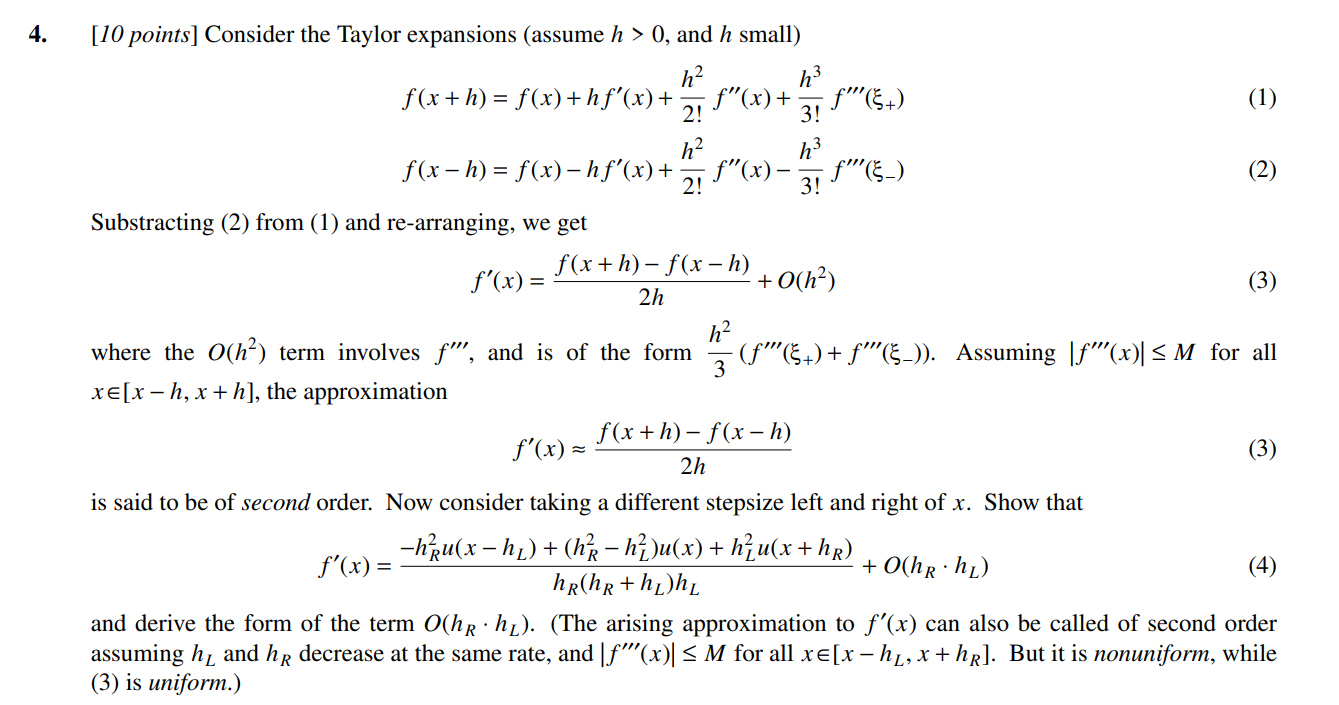Answered step by step
Verified Expert Solution
Question
1 Approved Answer
4. [10 points ] Consider the Taylor expansions (assume h>0, and h small) f(x+h)=f(x)+hf(x)+2!h2f(x)+3!h3f(+)f(xh)=f(x)hf(x)+2!h2f(x)3!h3f() Substracting (2) from (1) and re-arranging, we get f(x)=2hf(x+h)f(xh)+O(h2) where the

Step by Step Solution
There are 3 Steps involved in it
Step: 1

Get Instant Access to Expert-Tailored Solutions
See step-by-step solutions with expert insights and AI powered tools for academic success
Step: 2

Step: 3

Ace Your Homework with AI
Get the answers you need in no time with our AI-driven, step-by-step assistance
Get Started


